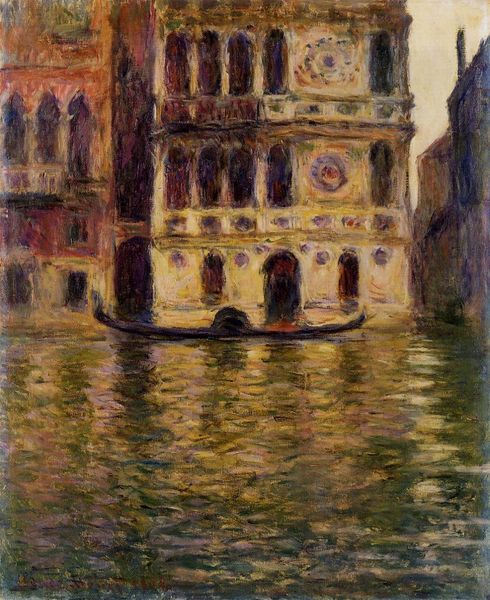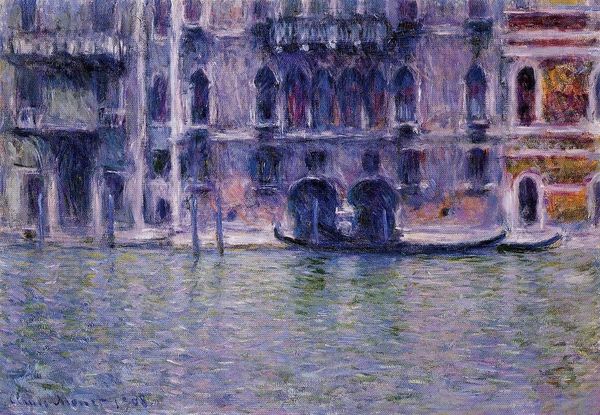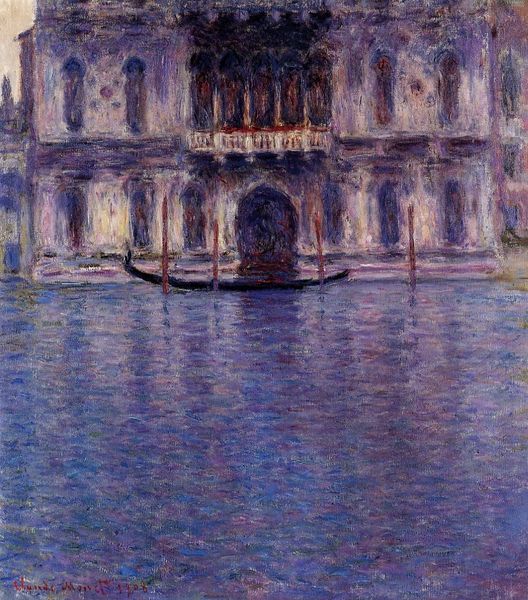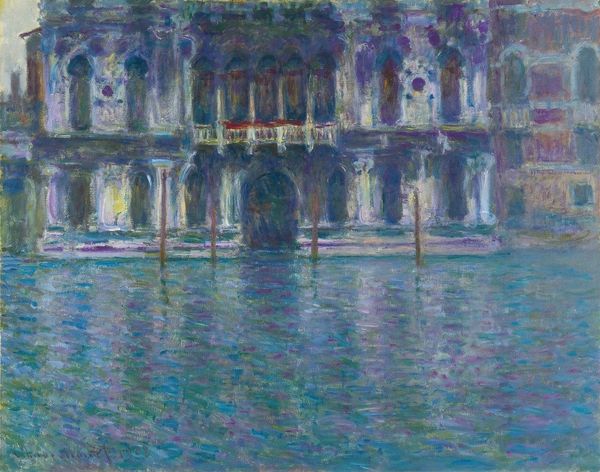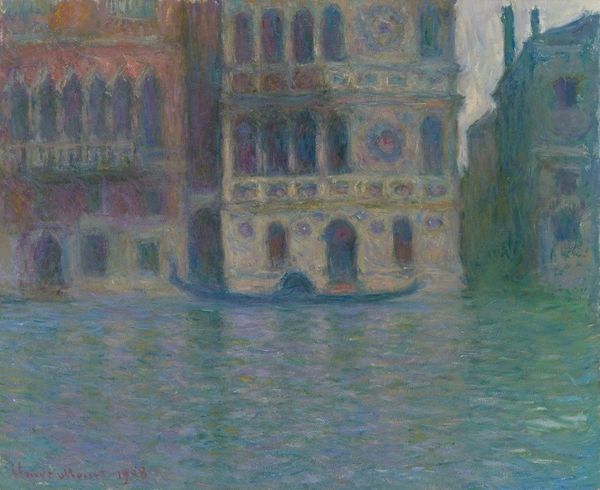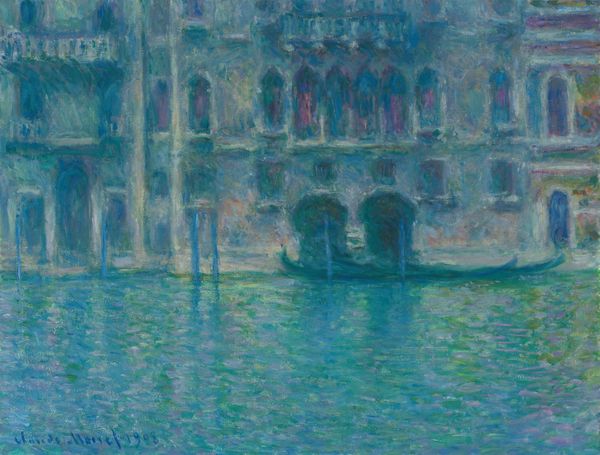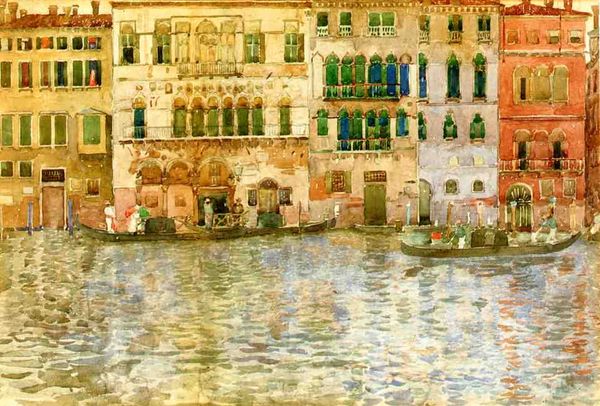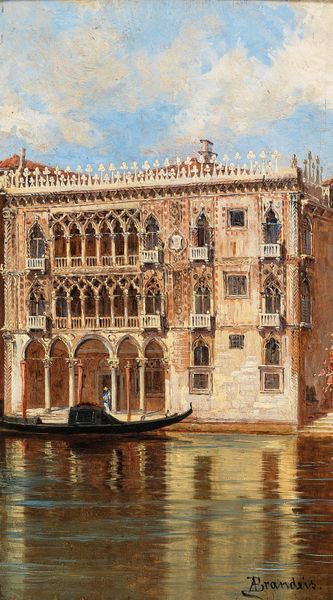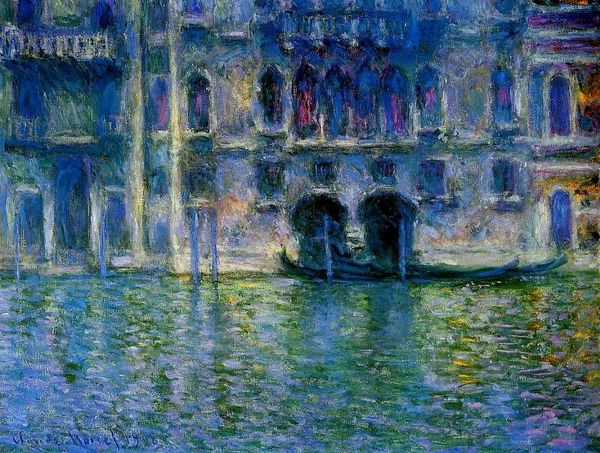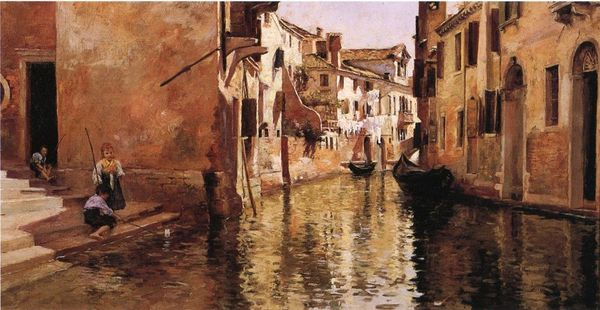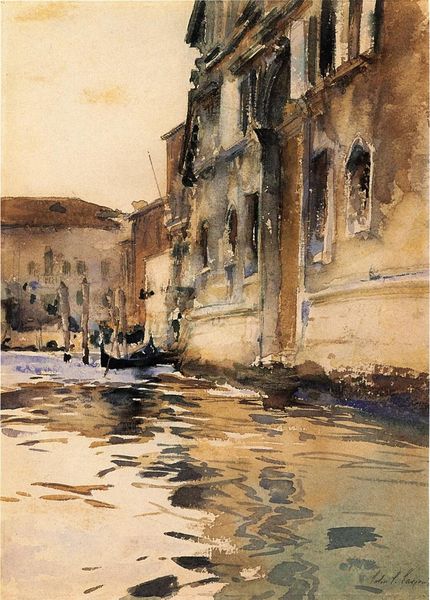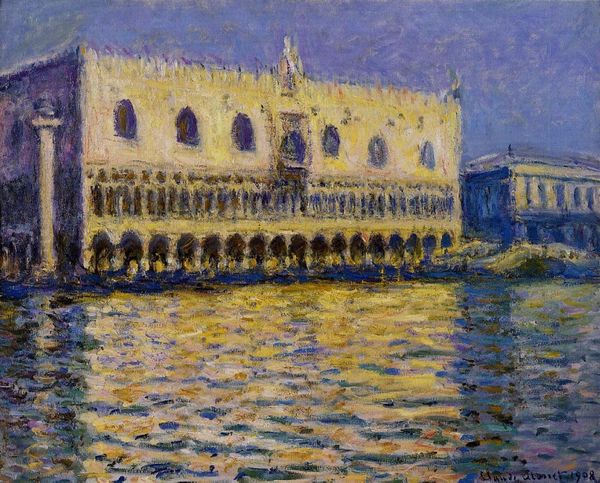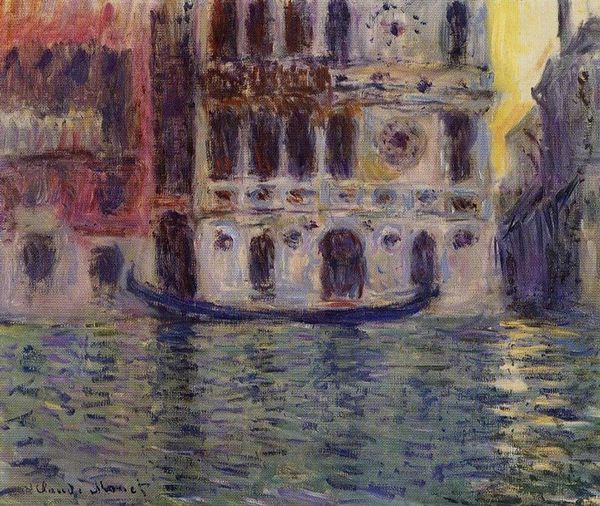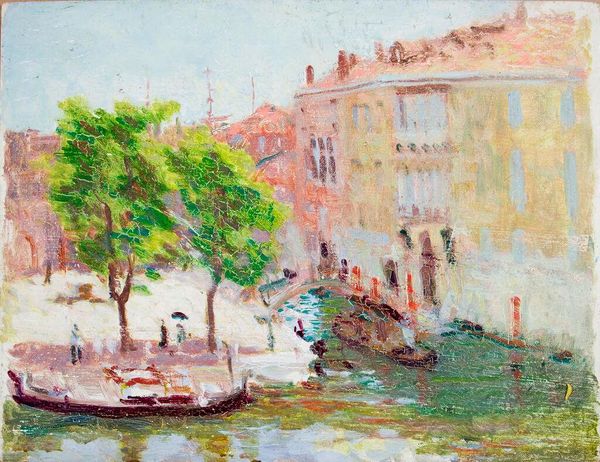
Copyright: Public domain
Curator: Ah, Venice... isn't it all just fading beauty? That's the vibe I get immediately looking at this oil painting. Editor: It certainly has a wistful quality. This work, quite simply titled "Venice," was painted in 1913 by William Merritt Chase. Look at how Chase renders form using impressionistic brushstrokes and a somewhat subdued palette. Curator: Subdued is one word. Melancholy? Is that too strong? There's this beautiful building, clearly Venetian with its arches, rendered as if it’s dissolving into the water it sits upon, that, to me, represents the acceptance of decay. Even that single gondola passing by… is it lonely or serenely solitary? Editor: I perceive that contrast somewhat differently. Notice the building's strong vertical emphasis—a counterpoint to the horizontal waves. The architecture, despite being veiled by soft brushwork, is substantial. Consider how he repeats arched motifs at different scales to bring a unity to the composition. The gondola serves a similar function; it echoes these curves on the water, almost acting as a material accent reinforcing depth of field. Curator: You see structure, I see mood. It reminds me of aged photographs, where edges soften, and memories become more dreamlike. But then, maybe that's the eternal draw of Venice itself? I wonder what Venice made him feel as he captured this particular spot. Editor: He clearly uses impressionistic methods in capturing his sensory experience of the city: dappling light, quick brushstrokes. Also the water surface, broken up with tiny brush strokes, does capture its ephemeral movement so that the building does indeed seem mirrored and a part of the lagoon. Curator: It's a dance between solidity and transience, right? Editor: Precisely. Chase captures Venice not just as a cityscape, but as an experience, a feeling etched in impermanence. And ultimately its effect hinges on understanding how its components – shape, brushstroke, depth – interact to generate its final emotive tenor. Curator: And that tenor is… hauntingly beautiful, like a half-remembered song. Editor: Fitting words for a city steeped in both history and myth, wouldn’t you say?
Comments
No comments
Be the first to comment and join the conversation on the ultimate creative platform.
